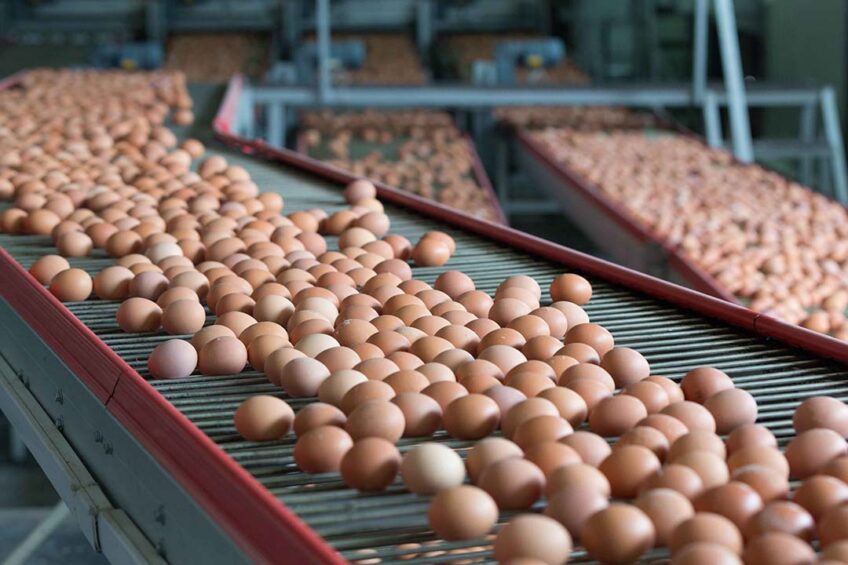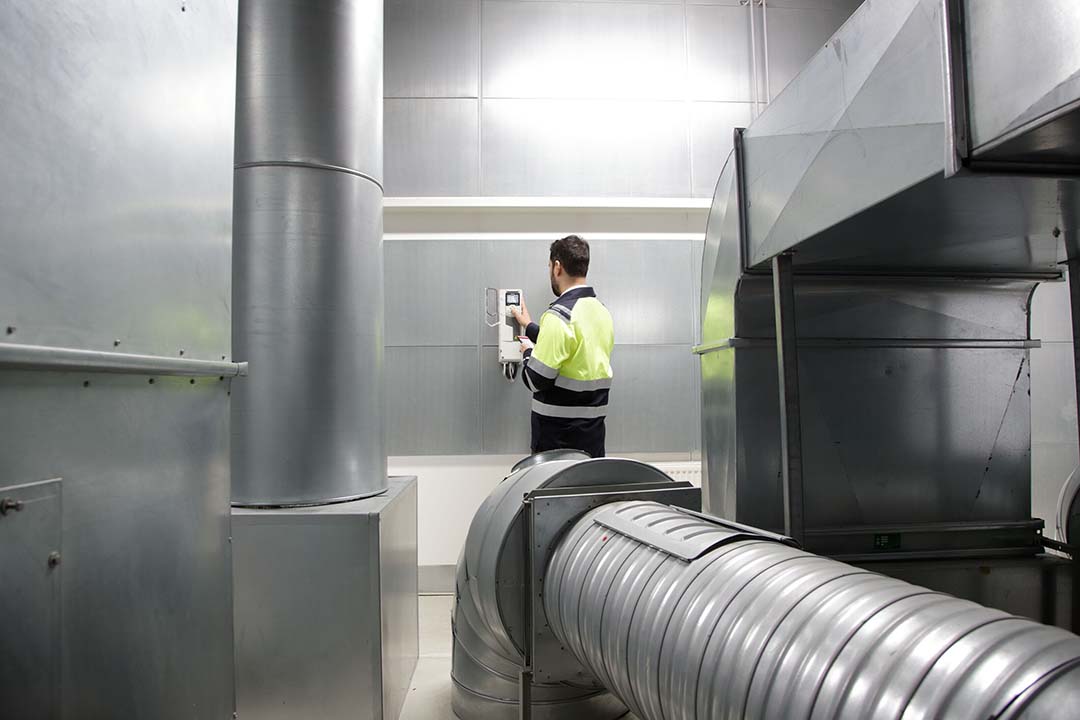Powering poultry farms: How variable speed drives enhance efficiency and welfare

Lei Gommers, Global Business Development Manager, Agriculture, ABB Motion explores the pivotal role that variable speed drives (VSDs) paired with electric motors can play in addressing the poultry sector’s toughest challenges.
Global agricultural production must increase by 70% by 2050 to keep up with our growing population’s demand for food, according to The United Nations Food and Agriculture Organization (FAO). It’s a challenge that will affect all areas of food production, particularly when set against parallel sustainability targets.
This is of great relevance to the poultry industry. As consumer expectations shift towards high quality and ethical food production, the need to improve poultry welfare, preserve the environment, and conserve economic viability have become priorities in poultry farming, for both meat and egg production.
Variable speed drive solutions
Electric motors are vital components of poultry production, powering activities such as feeding, ventilation, egg collection, air scrubbing and manure drying. To enhance the efficiency and reliability of these processes, variable speed drive (VSD) solutions are a perfect fit. VSDs, such as the general-purpose drive ACS580, offer precise control over motor speed and torque, leading to significant savings in energy and operational cost. VSDs can also protect motors and other vital equipment from damage, minimising maintenance needs and downtime. Implementing drives simplifies the management of a poultry farm’s operations, allowing you to operate your facilities smoothly and with peace of mind.
And the return on investment (ROI) implications are significant. Adding VSDs and high efficiency motors to different applications in this way can help poultry farms reduce energy use by as much as 50%, bringing costs down steeply.
The vital role of VSDs
A typical egg production farm can be home to over 100 VSDs, controlling motors in a diverse range of applications, from fans, food mixing and dosing to washing, sorting and packaging. In many ways, they play a vital part in keeping egg production moving.
Functionally, VSDs sit between the electrical supply and the electric motor, finely tuning the motor’s speed and power to make sure it operates at precisely the speed needed for the application. If a motor operates without a drive, it constantly works at its maximum capacity, and output is managed through mechanical approaches like throttling, leading to an unnecessary waste of energy. In contrast, a VSD conserves energy by optimising the motor’s speed. Even small tweaks to the motor’s speed using a drive, such as reducing the speed of a fan or pump by 20%, can halve the energy consumption.
This speed control and soft start/stop technology is especially essential in egg transport conveyors, to prevent damage to the fragile eggs.
While VSDs are already widespread across different industries, the agricultural sector – including poultry farming – is adopting VSD technology in ever greater numbers to streamline processes and save energy.
For example, the change from caged systems to free range chickens is a challenge for farmers, since the manure collection must be done in an animal friendly way. VSDs with integrated adaptive programming can handle the complete control of manure scrapers without any additional components.
Poultry farms are also increasingly using programmable logic controllers (PLCs) in conjunction with VSDs. This combination delivers control systems that improve visibility over the intricate processes of poultry production.
Drives can also collect external data about production processes, as well as internal data about the motor and drive. In tandem with PLCs, this data can be shared via cloud systems to system integrators and service providers to increase uptime and reduce maintenance costs.
Agricultural cost savings
Achieving cost efficiency in poultry farming is essential, especially given poultry farm operations can be disrupted by unpredictable weather. While VSDs can’t change the weather, they can significantly lower operational costs by optimising the energy consumption of equipment used in raising poultry. This can lead to substantial savings and help poultry farmers to achieve sustainability goals.
Added to this, farmers will see savings in maintenance through using VSDs by reducing mechanical stress and extending equipment lifespan. Features like soft start and stop are particularly beneficial for high-inertia operations in poultry farming, such as those involving augers or mixers for chicken feed. This gentle ramping up or down of motor speeds prevents abrupt changes, lessening wear and thereby decreasing the frequency of maintenance needs.
Ensuring animal welfare in the poultry sector
For poultry farming, animal welfare is critical. And one of the areas in which VSDs are playing a crucial role is in controlling ventilation systems.
Poultry farms need reliable and safe ventilation – without it, a buildup of harmful gases can occur, causing suffocation, and it can be difficult to maintain a consistent temperature, causing thermal stress. VSD technology helps control temperature and CO2 levels, ensuring that chickens are housed at the correct temperature and can breathe clean air. This gives them a higher quality of life.
Through energy optimisation, it also leads to cost savings. In total, farmers could expect up to 35 – 40% energy savings by using VSDs for ventilation.
Another place where VSDs are contributing to poultry welfare is through water management. Effective water management is crucial in poultry farming as it directly impacts the health of the animals. Poultry requires a constant and clean water supply for proper growth, digestion, and overall well-being. To this end, water pumps play a pivotal role in ensuring a steady and reliable water supply within poultry farms.
The use of drives and motors in these pumps enhances efficiency and control. Drives allow for precise adjustment of pump speeds, optimising water distribution based on the specific needs of the birds. This not only conserves water but also reduces energy consumption, making the entire water supply system more sustainable.

Choosing a VSD
The demanding environments found in all agricultural sectors require VSDs that are resilient to dust, moisture, and intensive cleaning processes. VSDs in the agricultural industry need to be designed with this in mind, ensuring the device can endure such harsh conditions.
Importantly, when the electrical supply is unstable due to uneven power distribution and fluctuations, VSDs will maintain the operation of ventilation fans. This guarantees a steady and reliable stream of air for the animals, regardless of power issues.
Additionally, drives can play an important role in enabling data-led decision-making by providing key data in real time. By coupling a drive with a sensor, essential information is monitored, meaning data on the condition and performance of equipment can be collected. By sharing this data with specialists, farmers can pinpoint ways to reduce waste, keep operations running, and enhance energy efficiency.
Ensuring reliable and consistent egg production in China
As an example of VSDs being used in the poultry industry, market demand drove Big Dutchman, a leading producer of egg farming systems in China, to seek out a solution to increase efficiency in their automated egg farming lines. Over 200 ABB general purpose drives were installed, reducing downtime by 90% and commissioning time by 30%.
Compared to the VSDs that were previously in use in the Big Dutchman facility, introducing the ABB drives led to better control of conveyors and fans, enhancing uptime and ease of use, and improving the environment for chickens and customers. The drives also feature DC coils that reduce harmonic currents. Harmonics are unwanted frequencies that can cause distortions in the electrical system and may lead to inefficiencies and component wear. By reducing these, the drives can extend the life of components such as capacitors, ensuring more stable performance and better equipment longevity.
These benefits are crucial for remote farm locations that typically have weaker mains supplies due to their distance from larger communities. If drives can’t circumvent power supply issues, it can lead to problems with other machinery and applications. But with features to prevent this, such as built-in line reactors, harmonic filters, and power conditioning capabilities, the drives help to ensure other equipment climate and feed control systems are working well, benefiting safety and productivity.
Driving better outcomes in poultry farming
Integrating VSDs into operations is essential for the continued growth of agriculture – including within the poultry industry. This is especially the case considering the challenges poultry farmers are facing in terms of reducing energy costs, improving animal welfare, and advancing sustainability efforts.
Click here to find out more about how electric solutions can help in poultry production
Join 31,000+ subscribers
Subscribe to our newsletter to stay updated about all the need-to-know content in the poultry sector, three times a week. Beheer
Beheer

 WP Admin
WP Admin  Bewerk bericht
Bewerk bericht